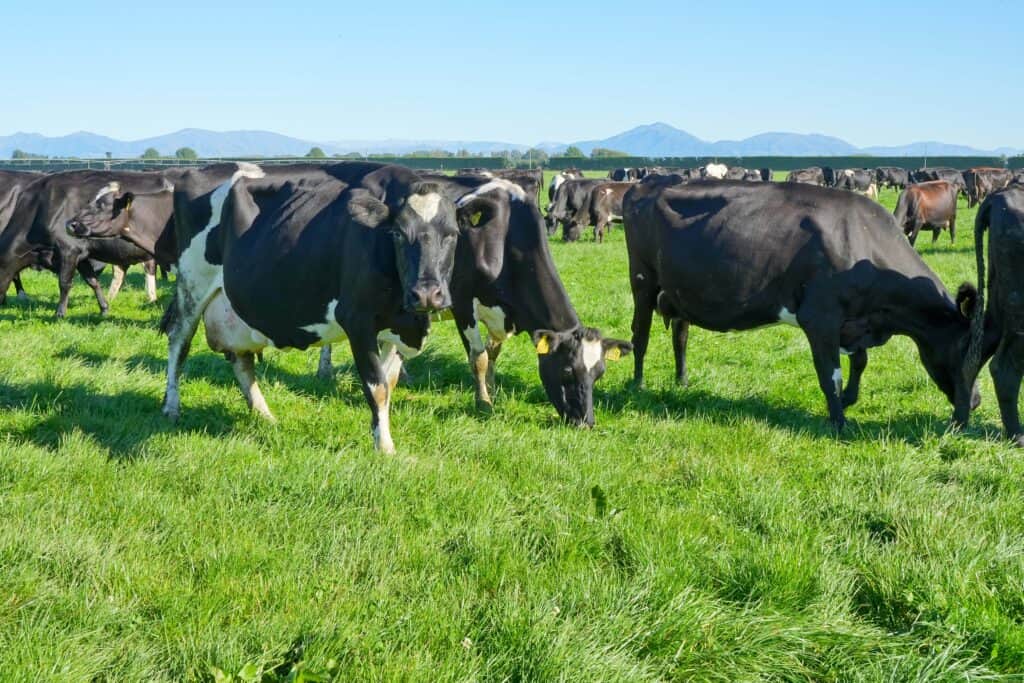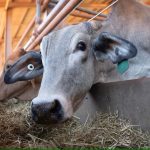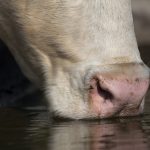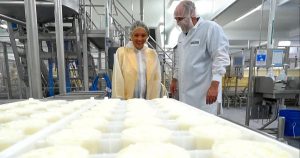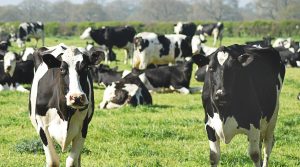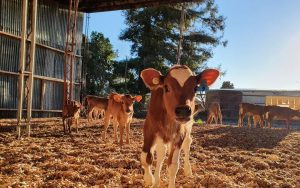
According to 2022 BCMS data, the share of GB farms running any type of block calving system has risen to 18.7%, while the number of farms running an all year round (AYR)* system has eased back from 2021 figures to 30.7%. If we look over a longer time period, there has been a significant trend towards farmers adopting a specific calving system. In 2016 58.5% of farms were categorised as non-defined* in their calving pattern, in 2022 this has fallen to 50.6%.
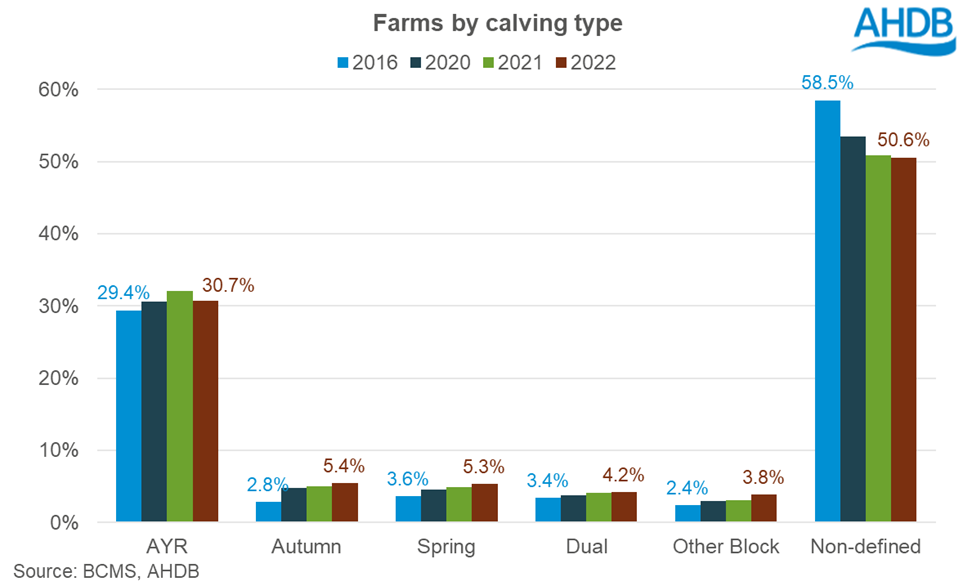
With AYR calving remaining fairly steady around the 30% mark, the biggest shift has been those choosing to adopt a block calving system which has risen by 6.6 percentage points since 2016. Within this, Autumn* block calving has been the most favourable moving up 2.6 percentage points from 2016 to 5.4% of total farm numbers in 2022. The numbers of farms choosing to follow Spring block* and dual block* have moved up to 5.3% and 4.2% respectively. This movement has exaggerated the peaks and troughs in the seasonal birthing profile of the GB dairy herd.
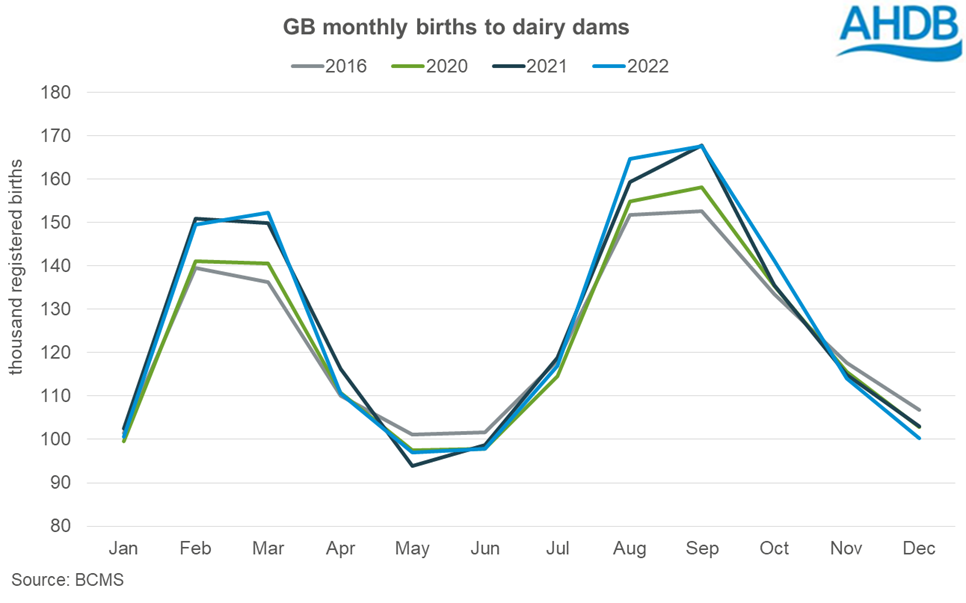
As a general rule, the larger farms, in terms of number of births per year, operate a more defined system. The number of larger farms has been increasing over recent years, with the largest farms (those with over 500 births per year) favouring an all year round (AYR) calving pattern (63.3%) and less than 10% falling into the non-defined category. Farms with between 200-500 births per year, see a more mixed approach to operating systems with 46.3% AYR, 10.1% Autumn block, 10.0% Spring block, however they do see a larger number in the non-defined group (25.9%). The smallest farms (those with less than 200 births per year) have been in decline in recent years, the majority (62.0%) of farms this size sit as non-defined with just over a quarter following an AYR system and the remainder (12.5%) in a block calving operation.
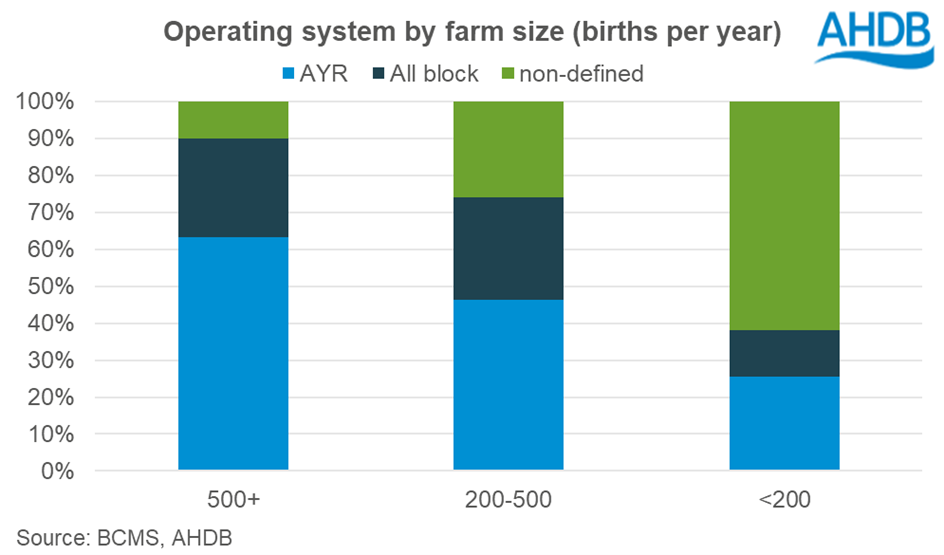
*Definitions for analysis
2020 was the first time we were able to see the breakdown based on calf registrations for each farm in the country. Historically, the breakdown of system in GB has been based on farmers’ self-assessment of which system they believe they operate.
The data excludes any farms where all registrations were for non-dairy calves, and also excludes farms who had less than 25 calf registrations in the year.
Our farm key performance indicators suggest block calving herds should target 85% of calvings within a 6-week window, although the “good” level is set at between 70-85%. For this analysis we have used a wider definition of 4 months and 80% of registrations as set out below:
- Spring block: 80% of registrations occur within 4 months from 1 Feb to 31 May
- Autumn block: 80% of registrations occur within 4 months from 1 Aug to 30 Nov or 1 Sep to 31 Dec
- Other block: 80% of registrations occur within 4 months other than defined in spring or autumn block
- Dual block: 90% of registrations occur within the spring block or autumn block windows defined above.
- AYR: Registrations are spread relatively evenly throughout the year, but that can be based on a 12-month, 11-month or 10-month calving system. 12-month means each month sees 3.3%-13.3% of annual registrations. 11-month means 4.1%-14.1% of annual registrations in 11 months of the year, and 10-month means 5%-15% of annual registrations in 10 months of the year.
- Non-defined: covers any farm not falling into one of the other categories.
